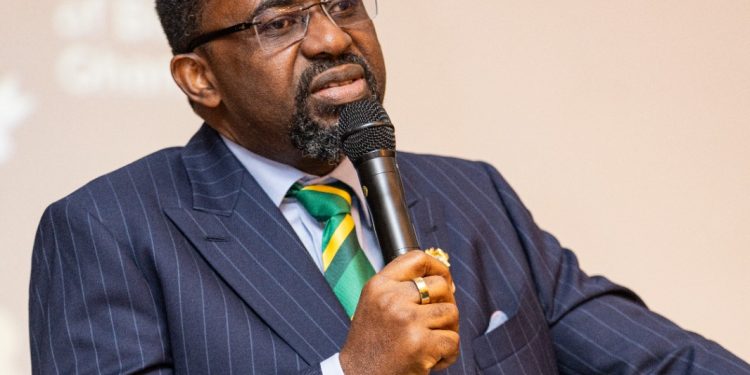ACCRA — The Bank of Ghana (BoG) has revised its forecast for achieving single-digit inflation, now expecting the milestone in the final quarter of 2025, ahead of earlier projections. The update reflects improving macroeconomic conditions and a sustained disinflationary trend in West Africa’s second-largest economy.
Speaking at a recent monetary policy briefing, Dr. Johnson Abradu-Otoo, a BoG economist, outlined the central bank’s updated outlook. “At the beginning of the year, we projected single digits for the first quarter of 2026,” he said. “Based on current developments, the Bank of Ghana has advanced this to the last quarter of 2025.” This shift underscores Ghana’s progress in stabilizing prices after years of elevated rates.
Ghana’s inflation rate has declined steadily, reaching 11.5% in August 2025—the lowest since October 2021 and marking eight consecutive months of easing. Key drivers include lower food and transport costs, a stronger Ghanaian cedi against major currencies, and favorable global commodity prices for exports like gold and cocoa. These factors have bolstered foreign exchange reserves and reduced imported inflation pressures.
The BoG‘s medium-term inflation target remains within a 6-10% band, with officials aiming for 8% plus or minus 2% by year-end. To support this trajectory, the central bank cut its benchmark policy rate by 300 basis points in July, bringing it to 25%—the largest single reduction in Ghana’s history. Analysts anticipate further easing at the upcoming Monetary Policy Committee meeting on September 17, potentially lowering rates to 21.5%.
Earlier in April, the BoG had set a more conservative end-2025 inflation target of 12%, down from an initial 16% forecast. Independent projections from Deloitte align with the optimistic shift, predicting single-digit inflation by December 2025, below the central bank’s prior 12% goal. The firm attributes this to fiscal consolidation and monetary adjustments, which have widened positive real interest rates to 14.3% from 6.2% a year earlier.
Ghana’s economic rebound gained momentum in 2025, with first-quarter GDP growth accelerating to 5.3% from 3.6% in late 2024. The International Monetary Fund has also noted the downward trend, forecasting inflation at 9.4% by end-2026. However, the World Bank cautions of persistent inflationary risks through 2025, projecting moderate growth of 4.3% amid fiscal tightening and elevated rates.
Potential headwinds include cedi volatility, climate impacts on agriculture, and global commodity fluctuations. Regional price disparities further highlight the need for targeted interventions to ensure even recovery across Ghana’s 16 regions.
The revised inflation forecast signals cautious optimism for households and businesses grappling with cost-of-living pressures. Lower rates could spur lending to the real sector, boosting investment and consumption. As Ghana navigates its post-debt restructuring phase under an IMF program, the Bank of Ghana‘s proactive stance aims to anchor expectations and foster sustainable growth.
Economists view the update as a milestone in Ghana’s battle against inflation, which peaked above 50% in recent years. With the end-2025 target in sight, attention turns to the September MPC decision and its implications for monetary policy in a stabilizing economy.




